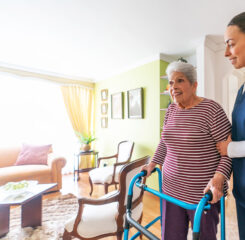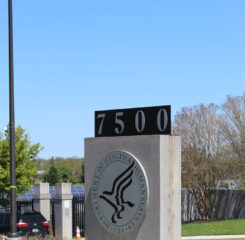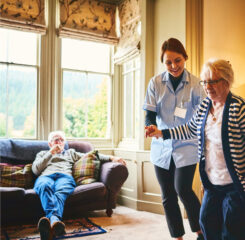Interoperability, as LeadingAge and Center for Aging Services Technologies (CAST) members know all too well, is a longstanding concern and challenge in post acute care.
For many reasons, nursing homes and other post-acute care providers face a large gap in interoperability compared to hospital and physical practice care partners. This disparity persists even though providers continually advocate and collaborate to advance the use of healthcare technologies in post-acute settings. LeadingAge and CAST have participated, independently and as a partner with the Long-Term Post-Acute Care Health Information Technology (LTPAC Health IT) Collaborative, in those efforts.
Now, as the Centers for Medicare and Medicaid Services (CMS) considers regulations as part of the FY2026 Skilled Nursing Facility Prospective Payment System (SNF PPS) update, a unified message is emerging from the field: the time has come to close the interoperability gap.
In recent comment letters submitted in response to CMS’s Request for Information included in the FY26 SNF Prospective Payment System update, both the LTPAC Health IT Collaborative and LeadingAge reinforced the urgent need for investment, standards alignment, and meaningful support to bring nursing homes into parity with the broader healthcare ecosystem.
A Digital Divide Rooted in Policy Gaps
Although nursing homes’ use of electronic health records (EHRs) is widespread—over 80% now use them—most providers remain far from achieving true interoperability, a point emphasized by both the Collaborative and LeadingAge.
Unlike hospitals and physician practices, nursing homes were excluded from the Health Information Technology for Economic and Clinical Health (HITECH) Act at its enactment in 2009. This legacy has essentially handicapped providers from making interoperability advances due to a lack of funding and infrastructure, rendering them unable to fully participate in national health information exchange efforts.
This exclusion has consequences. As noted in the LTPAC Collaborative’s comments to CMS, only 8% of hospitals routinely receive interoperable data from long-term care providers. LeadingAge’s letter similarly stated that while providers are advancing in their use of EHRs, “interoperability and seamless data exchange across care settings remain a significant challenge.”
Additional insight from LeadingAge’s recent CAST survey underscores this point. The 2025 survey revealed that while providers are leveraging more advanced functionalities within their EHR systems, “true interoperability and health information exchange remain limited.” CAST’s updated 7-Stage EHR Adoption Model shows that many providers have reached intermediate stages of adoption, yet Stage 7—full interoperability and integration with external systems—remains out of reach for most.
From Gaps to Growth: A Constructive Path Forward
Rather than proposing punitive measures, both groups call on CMS to take a supportive, capacity-building approach. The Collaborative recommends CMS-funded implementation grants to help SNFs onboard Qualified Health Information Networks (QHINs) and meet the Trusted Exchange Framework and Common Agreement (TEFCA) requirements. The Collaborative also calls for quality bonuses tied to demonstrable improvements in information exchange, and for CMS to develop a set of Fast Healthcare Interoperability Resources (FHIR) validator tools and onboarding supports tailored to the SNF context.
In alignment, LeadingAge urges CMS to recognize the resource limitations SNFs manage and avoid measures that could unintentionally penalize providers that are still catching up. Our letter highlights the importance of investing in digital infrastructure and leveraging standard application programming interface (API)s and FHIR-based solutions, particularly through ongoing projects like the Post-Acute Care InterOperability Project, also known as PACIO.
A Maturity Model with Practical Measures
The LTPAC Collaborative outlines a tiered “interoperability maturity model” to help CMS assess and support progress. From foundational FHIR-based data submissions to advanced bidirectional data exchanges and patient-mediated sharing, the model offers clear steps and flexibility for SNFs at different levels of readiness.
Crucially, both responses underscore that interoperability progress should be measured not just by technology adoption but by actual improvements to care workflows and resident outcomes. This approach includes reducing manual paperwork, improving transitions of care, and ensuring patients and families have meaningful access to information.
Equity, Not Uniformity
Recognizing disparities in broadband access, staffing, and cyber-resilience—especially in rural or under-resourced communities—the Collaborative and LeadingAge both caution against a one-size-fits-all model. They recommend that CMS include exceptions and mitigation strategies for providers facing barriers outside their control, such as weather events or ransomware attacks.
A Shared Vision for Inclusion
As a member of the LTPAC Health IT Collaborative, LeadingAge’s voice carries both individual and collective weight. These aligned recommendations reflect a broader consensus across long-term and post-acute care: the future of aging services must be digitally connected, but providers need the right tools, funding, and policy frameworks to get there.
With the right combination of incentives, standards, and support, SNFs can become fully integrated players in a truly interoperable healthcare system—one that centers continuity, transparency, and person-centered care.

 Shutdown Week Three: Impact of Ongoing Closure on Affordable Housing
Shutdown Week Three: Impact of Ongoing Closure on Affordable Housing RHT Program Awards: All 50 States To Receive Funds, Says CMS
RHT Program Awards: All 50 States To Receive Funds, Says CMS CMS Publishes Draft OASIS-E2 Guidance Manual
CMS Publishes Draft OASIS-E2 Guidance Manual CMS Debuts Models: ACCESS, ELEVATE and LEAD
CMS Debuts Models: ACCESS, ELEVATE and LEAD


